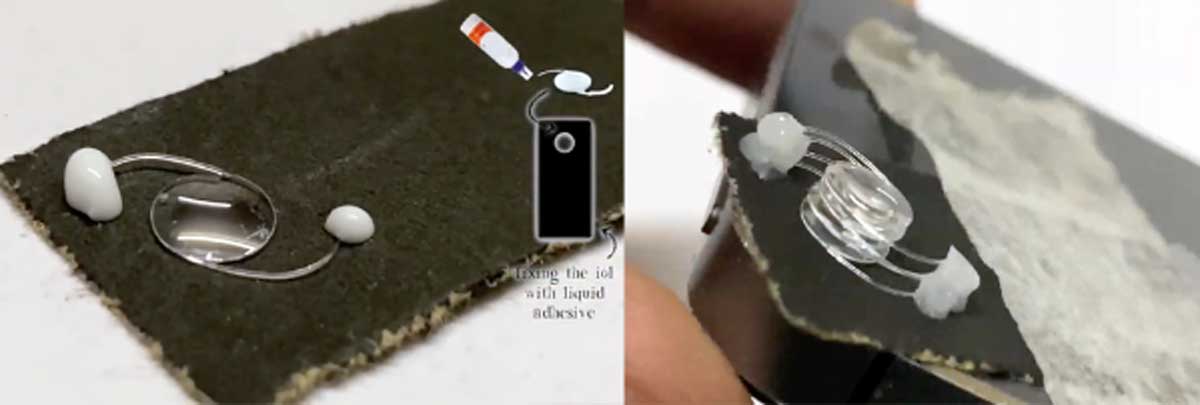 |
| The team found one IOL, affixed to a phone camera (left) sufficient for examination and used a four-IOL array (right) to examine epilated lashes in detail. Photo: Hirika Gosalia, Aravind Eye Hospital, via YouTube. Click image to enlarge. |
Fans of the old TV show MacGyver routinely enjoyed the protagonist’s ability to jerry-rig an important tool from any available materials. Doctors in India have done much the same thing—using an iPhone, a few discarded IOLs, some glue and a piece of cardstock to create a makeshift in vivo microscope they call the IOLscope.
As described in a case report for Eye & Contact Lens, the team cut a hole into black card stock and glued a 20D IOL over the opening, then attached this device over an iPhone’s camera module. The result: a resolution boost sufficient enough to capture in vivo imaging of Demodex mites on the lashes of a 56-year-old man. A further modification stacked four 30D IOLs over the phone’s camera to enable microscopic examination of an epilated eyelash.
The authors, from Aravind Eye Hospital in the South Indian state of Tamil Nadu, said that the advantage of their technique using IOLs was the better image resolution and magnification. “This office-based rapid diagnosis with the help of an instant image of the pathogen can influence the patient to obtain prompt treatment by showing its video or photograph,” they explained. It also has the ability to record and send the images immediately to microbiologists or clinicians.
They noted that the Demodex diagnosis arrived at by using their IOLscope is only a preliminary step toward screening patients and not a confirmatory test, such as light microscopy, which is the instrument typically used to make an accurate diagnosis. But another advantage of the approach is that it can be used in remote, rural areas where slit lamp biomicroscopy and laboratory set-ups may not be available. The team explained that IOLs unsuitable for intraocular implantation because of broken haptics or other flaws can be repurposed for this use.
A how-to video of their technique can be found on YouTube here: https://www.youtube.com/watch?v=fs9E7Ym_QYMGosalia H, Chandrakanth P, Verghese S, et al. Rapid office-based diagnosis of Demodex using an innovative smartphone-aided intraocular lens tool. Eye Contact Lens. March 24, 2022. [Epub ahead of print]. |

